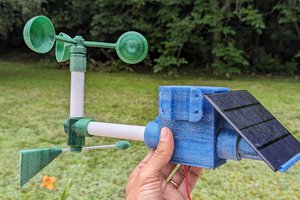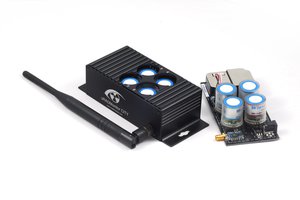Problem with today’s weather data and stations
Weather is perhaps the single largest external swing factor in business performance – yet, accurate weather prediction is still an open scientific question and ground weather conditions are still scarce on a global scale .
Traditionally, automatic weather stations (AWS) can easily monitor temperature, pressure and humidity, using solid state sensors and proper solar shielding, however wind and precipitation typically involve mechanical parts, higher cost to achieve robustness/reliability, periodic maintenance and cumbersome installation. They cost from a few hundred $ up to a few thousands and usually come with additional running expenses due to GSM/3G data plans of the required SIM cards.
As a result, only in large cities one can typically find few public AWS deployed by weather enthusiasts, universities, etc. and most rural/poor areas worldwide have no ground weather data at all - which is often where they are needed the most.
Even in large cities with a plethora of AWS, there are not enough weather data to provide modern weather services such as real-time rain radars hyper local weather alerts and nowcasting. Data required for these services traditionally require doppler weather radars which are rarely deployed due to extremely high costs.
An alternative approach would be deploying a large number of low-cost, automatic weather stations, and make their data available so that new innovative weather services can be realized. These AWS would have to be ridiculously low cost, and maintenance free in order to be deployed in large quantities over areas that lack actual weather data. Todays dramatic cost reduction of IoT hardware enables me to vision disposable, fire and forget, weather sensors.
Introducing Weather Pyramid
I propose a low cost solution which is competitive to traditional weather stations; a maintenance-free, energy autonomous, solid state (no moving parts), compact, easy to install and cost efficient, Internet-connected weather monitoring device,
This is not yet another weather station build on low-cost sensors. This project proposes a novel approach to wind and rain sensing, never tried before.
Inertial sensors are used to track the motion of the entire unit as it freely swings from a tether in order to estimate wind intensity and direction. Wind has a unique effect on the unit’s motion when combined with an appropriate enclosure shape, hence a rough estimate on wind’s speed and direction can be extracted from the motion data. The Weather Pyramid freely swinging from a tether due to wind can be modeled in 2D as a pendulum subject to an additional force from airflow. The pendulum angular displacement from the equilibrium depends on the airflow speed and the aerodynamic characteristics of the given mass.
A low cost 6-axis IMU such as the InvenSense MPU-6050 will be used to realize the proposed wind measurement technique. According to preliminary estimations and tests, the tethered WP modeled as a pendulum, accelerates at 0 - 3g due to 0 - 12 Beaufort scale wind respectively, while the minimum difference between two consecutive Beaufort numbers is 2.02mg. The ±2g - ±16g accelerometer range with 2 mg/LSB sensitivity @ ±4g and the ±250°/s - ±2000°/s gyroscope range with 17.50mdps/digit sensitivity @ ±250°/s meet the requirements for wPyramid attitude measurement due to the wind effect. Sensor data sampling rate for the proposed application is defined @ 1Hz, satisfying the project scope for wind speed and direction measurements.
In addition, rainfall intensity can also be measured without mechanical parts, by using capacitive touch sensor technology on the inner-side of the enclosure. With the proper internal wire grid connected on a multi-touch MCU (MPR121...
Read more » Manolis Nikiforakis
Manolis Nikiforakis



 JP Gleyzes
JP Gleyzes
 Manoj kumar
Manoj kumar
 Radu Motisan
Radu Motisan
 Pratyush-Mallick
Pratyush-Mallick
would it be possible to add 4 ultrasonic sensor at the bottom of the pyriamid with a square base?
http://embedded-lab.com/blog/making-an-ultrasonic-anemometer/
they would be maintenance free, covered from snow and stuff. but i don't know how much power they consume.